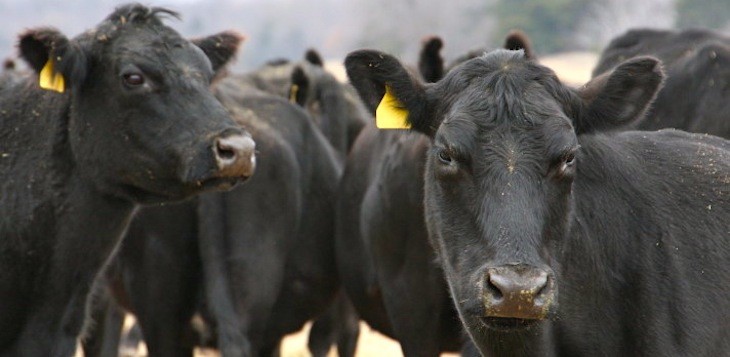U.S. beef industry keeps an eye on demand amid slowing production
by November 20, 2018 3:54 pm 403 views

Derrell Peel, extension livestock marketing specialist at Oklahoma State University, said through 2018 total beef production has increased by 14.2% (3.4 billion pounds) since the 2015 low. But Peel said demand for beef will be less certain in 2019 which has production slowing from recent years.
Production is expected to increase between 1.5% and 2% year over year in 2019 to 27.5 billion pounds. This follows a projected 3.3% annual increase this year which should yield a record 27 billion pounds. Peel said strong demand for beef in the U.S and abroad had supported prices and margins at all levels and helped to expand beef production. He said demand will have to be strong again next year to account for the beef production increases hitting record proportions.
“There are, however, continuing and perhaps growing challenges and threats to beef demand in the coming year. In addition to record beef supplies, pork and poultry production will increase from record 2018 levels to record production totals in 2019. Thus far, beef has maintained good demand relative to pork and poultry as indicated by the fact that beef retail prices are at near record ratios compared to retail pork and poultry prices,” Peel noted.
Peel said beef trade has played a big role in moderating domestic oversupply pressures seen in other proteins like chicken and pork. The U.S. Meat Export Federation reports beef exports are up 13.3% year over year through September. This follows an 11.8% jump in 2017 and a 12.8% rise in 2016.
“Beef imports have held steady in 2018, up just 0.4% so far this year. Total annual beef imports decreased 0.7% in 2017 following a 10.6% year over year decrease in 2016,” Peel said.
He said the U.S. economy has supported beef demand thus far, but the recent stock market volatility is seen by some as a sign of more fragile macroeconomics going forward.
“Rising interest rates and growing budget deficits will add to inflationary pressures and contribute to a stronger dollar. A rising dollar could add to export headwinds in the coming months,” Peel added.
There is also uncertainty with global trade hanging over the beef and other agricultural markets. He said the industry expects trade disruptions will likely lower U.S. and global macroeconomic growth in 2019. Peel said while the beef industry has been able to avoid direct tariffs, there is still concern from unresolved indirect tariff impacts.
“Consumers will see growing tariff impacts that may impact consumer spending and beef demand. Tariffs on consumer goods, especially if increased further, are likely to turn Dollar General into something like $1.20 General. Tariff driven price increases could push consumers to cheap and abundant pork and poultry at the expense of beef demand,” Peel warns.
Tyson Foods CEO Noel White recently told analysts Tyson is in good shape with respect to its beef business. He expects plenty of cattle in the pipeline to keep margins positive as long as there are no major hiccups with labor or trade. Tyson Foods recently reported annual beef sales of $15.473 billion, up 3.1% on volume and 1.2% higher on price from the previous year. Tyson had a record year in beef with operating income of over $1 billion and an operating margin of 8.9% through the fiscal fourth quarter.
Sterling Market reports beef packer margins have averaged more than $170 per head this year, compared to $111 per head a year ago. John Nalivka, director of Sterling Market, said sustained margin strength is noteworthy. He said in the face of strong demand he sees beef prices rising about 3% in 2019.
